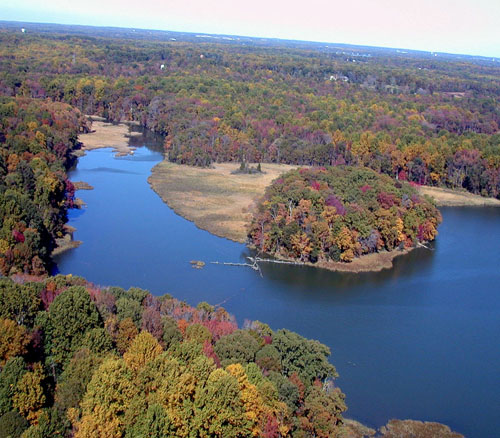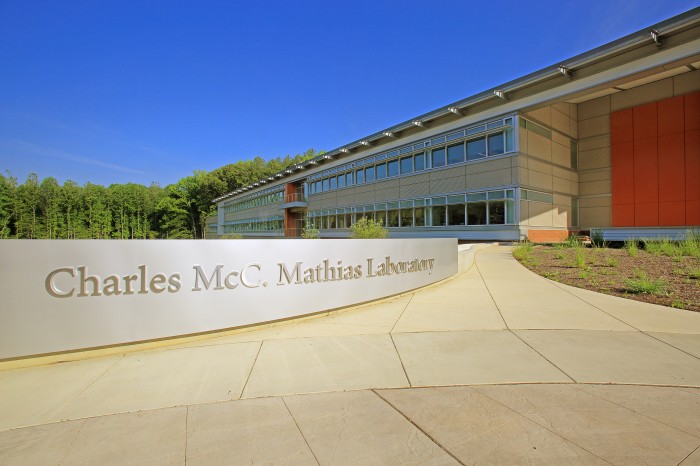Today in Smithsonian History: November 19, 1987

This photo shows part of the Muddy Creek watershed that flows into the Rhode River which flows into to the Chesapeake Bay, which is connected to the Atlantic Ocean. The site is is part of the Smithsonian Environmental Research Center in Edgewater, Md. (Photo courtesy of SERC)
November 19, 1987 Ground is broken for the new Smithsonian Environmental Research Center laboratory at the Center’s site in Edgewater, Maryland. The building, to be named the Charles McC. Mathias, Jr., Laboratory, is scheduled for completion in the fall of 1988. The Center is named in honor of Mathias, former U.S. Senator from Maryland, because of his many years of championing legislation to protect the Chesapeake Bay from overdevelopment and pollution.
In September 2014, a new Charles McC. Mathias Laboratory became the the Smithsonian’s first completely green LEED-Platinum building. Research environments are highly energy intensive and typically consume three-to-four times as much electricity as other buildings.Read more about the challenges of building a green research laboratory. >>

Drawing on geothermal and solar power, and other features such as automated lighting, the Mathias Lab is estimated to be 42 percent more energy efficient than a non-LEED-certified lab. (Photo by Chuck Gallegos)
Posted: 19 November 2019
- Categories:








